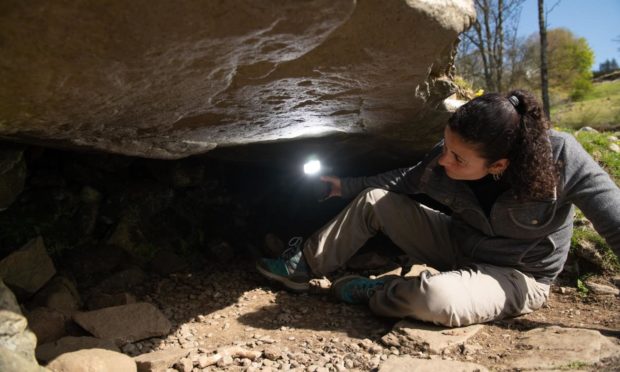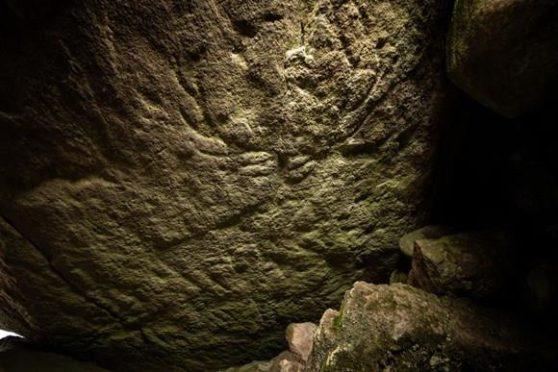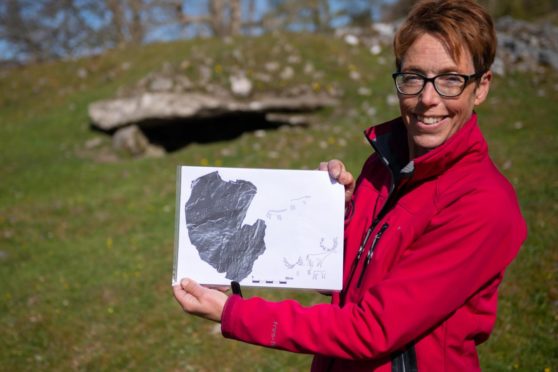An amateur archaeologist who stumbled upon delicate prehistoric carvings of a deer, thought to be the oldest of their type in the UK, has spoken of his “completely amazing” discovery.
Hamish Fenton said he slid inside the bronze age burial mound with his torch and spotted unusual markings on the cover of the chamber.
He said: “As I shone the torch around, I noticed a pattern on the underside of the roof slab which didn’t appear to be natural markings in the rock. I could see that I was looking at a deer stag upside down, and as I continued looking around, more animals appeared on the rock.
“This was a completely amazing and unexpected find and, to me, discoveries like this are the real treasure of archaeology, helping to reshape our understanding of the past.”
Carvings show two male red deer
The carvings, thought to be between 4,000 and 5,000-years-old, have been discovered for the first time in Scotland, hidden inside Dunchraigaig Cairn in Kilmartin Glen in Argyll.
Thought to date to the Neolithic or Early Bronze Age, they include depictions of two male red deer, which are considered to have been the largest deer species in Scotland during this time.
Full-grown antlers can be seen on both animals, while anatomical detail including a short tail can be seen on one.
Three other quadrupeds are also visible, two of which are thought to be juvenile deer.
Valuable as sources of meat, hides, and with bones and antlers used for a variety of tools, deer would have been very important to local communities during the Neolithic and Early Bronze Age.
Historic Environment Scotland (HES) say they are the first clear examples of deer carvings from the Neolithic to Early Bronze Age in the UK.
‘Remarkable’ carvings examined by HES and made into 3D model
Dr Tertia Barnett, principal investigator for Scotland’s Rock Art Project at HES, said: “While there are a few prehistoric carvings of deer in the UK, the only other ones created in the Early Bronze Age are very schematic.
“It is remarkable that these carvings in Dunchraigaig Cairn show such great anatomical detail and there is no doubt about which animal species they represent.”
Following the discovery, experts from Scotland’s Rock Art Project examined the carvings to confirm their authenticity using technology.
A structured light scan was carried out by HES digital documentation experts to create an accurate and detailed 3D model with photographic texture, and various visualisation techniques were then applied to the model in order to reveal more details of the carvings than would have been visible to the naked eye.
The remains of up to 10 individuals, some cremated, were discovered in the cairn in the 1860s, as well as artefacts including a whetstone, a greenstone axe and a flint knife.
It is cordoned-off until further evaluation can be carried out.


